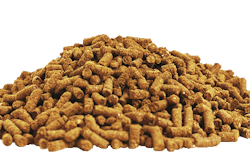
Feed mill efficiency and labor savings have increasingly prompted feed mills to invest in fully automated feed bagging systems.
“As feed mill volumes increase, companies want increased speed and capacity out of their feed bagging systems,” says Gerhard Steinmayr, executive manager of key accounts for Statec Binder. “Around the world, you’re seeing the move from semi-automatic systems to fully automated systems to keep up.”
What features should feed manufacturers looking for when shopping for a new bagging equipment?
Bagging system essentials
Feed mills considering a new bagging system are looking for cost-effective packing solutions, but there are additional features one should consider:
- Flexibility
Bagging equipment versatility is a must.
“Bagging equipment should be flexible and scalable according the behavior of the formulations which have to be packed,” says Joe Natale, sales manager - animal feed and animal feed ingredients, PremierTech. “Packing material also is evolving and therefore it is necessary to anticipate such kinds of evolutions.”
- Reliability and efficiency
The bag-per-minute (BPM) rate is potentially the most misleading number that is used to describe equipment, Natale says. He suggests looking at a total efficiency and equipment uptime as important considerations.
Steinmayr notes that, to be truly efficient, much of the value is gained during upstream manufacturing and production equipment must be on par as well.
- Cost savings
The cheapest machine is not necessarily the most cost effective, notes Jacky Fricker, sales director, PAYPER S.A. When looking for a bagging solution, mills must consider packing volume and select a solution with a “realistic” payback.
“The best way for a quick payback is reliable equipment and, for the worst case, equipment providers with effective after-sales service,” Fricker says.
- Operator safety
Operator injuries add costs and labor issues for average feed manufacturers. Natale suggests bagging systems are selected to ensure safe working conditions that prevent operators from engaging in repetitive motions or lifting excessive weight.
- Service and support
Having good equipment is one thing, but calling on someone who can help when you do have a problem is of critical importance, Natale says.
“Our 24-hours-a-day, 7-days-a-week, 365-days-a-year technical support has been a huge selling point for our customers who are continually trying to do more with less and don’t always have their maintenance people available as they are servicing a mill full of equipment,” he says.
- Return on investment
Return of investment (ROI) is typically calculated in saved manpower costs, but in emerging markets, it’s a matter of “quality which justify the investment, before it is a matter of cost saving,” Fricker says.
“Sometimes even the low availability of manpower may justify the automation of the packing process,” he says. “Others do struggle to find skilled employees to run automated equipment.”
Natale reports typical ROI runs two to four years depending on bag volume, number of shifts and the existing level of automation in the mill.
“The big thing to consider is exposure to injury claims that could change the ROI dramatically,” Natale says. “Typically, the more manual an application, the greater the potential for ROI improvement.”
- Overcoming footprint challenges
Oftentimes, new bagging equipment will be installed in tight spaces, but good teamwork and communication between the customer and sales engineers typically reveals the most effective layout.
Many bagging systems are customer engineered and built for the customer’s specific application.
“We have moved, rearranged, lowered, squeezed certain items to fit into the location that made sense for the customer,” Natale says.
- Operator training
Transitioning operators accustomed to working on semi-automatic systems to automated systems requires high-quality, detailed training to allow for fast and effective equipment adoption.
Don’t forget palletizers
Fricker notes that some mills still invest in semi-automatic bagging installations due to cost; however, others invest in palletizing systems instead.
“Due to evolution of operator wages, we get more and more orders for automatic palletizing even if the bagging is semi-automatic,” Fricker says. “Some customers want to save manpower costs with automatic palletizing than with automatic bagging where only one operator is required compared to two or four for the palletization operations.”
Steinmayr notes that as fully automated bagging speeds increase, palletizers become essential to the optimization of the line.

















